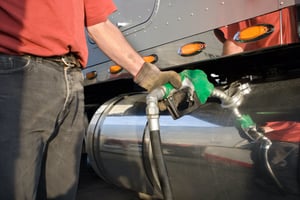Among the costs associated with operating a fleet of vehicles, none is causing as much pain these days as the cost of fuel. Both diesel and gasoline are at or near record-high prices, making saving on fuel costs wherever possible a top priority.
Businesses that rely on their fleets to generate revenue can’t follow the lead of consumers who may choose to drive less, carpool, or hop on their bicycles. Instead, businesses must hit high fuel costs head-on.
One option is to find ways to generate revenues to offset high fuel costs, such as by adding a fuel surcharge or otherwise passing along the high price of fuel to customers (practices that tend to be largely unpopular).
Another preferable option is to find ways to operate your fleet more efficiently to minimize the amount of fuel used. Telematics and the wealth of data that can be collected about your vehicles and other assets can aid in these efforts in multiple ways. Here are some of the most impactful adjustments you can make using the capabilities of fleet fuel management systems:
Planning more efficient routes. With a telematics platform, you can plan and optimize driver routes to minimize distance traveled. While this has long been one of the most attractive features of a telematics and route planning software, it’s become even more critical now, given the highly fluctuating fuel market.
.jpeg?width=345&name=Getting%20there%20iStock-1342002649%20(1).jpeg) Monitor driver behavior. While calculating the most fuel-efficient routes is important, an arguably even more important factor behind optimized fuel efficiency is driver behavior. By knowing, via telematics, how far a vehicle has traveled and if it has exited a designated geofence, it’s possible to determine if a driver fails to adhere to a planned route. Engine monitoring also can make it possible to identify long periods of idling, which can be a killer when it comes to wasting expensive fuel. I recently heard of a service technician who left his van idling in a customer’s driveway the entire 45 minutes he was in the house completing a service call. A telematics alert would have caught this instance of excessive, fuel-wasting idling.
Monitor driver behavior. While calculating the most fuel-efficient routes is important, an arguably even more important factor behind optimized fuel efficiency is driver behavior. By knowing, via telematics, how far a vehicle has traveled and if it has exited a designated geofence, it’s possible to determine if a driver fails to adhere to a planned route. Engine monitoring also can make it possible to identify long periods of idling, which can be a killer when it comes to wasting expensive fuel. I recently heard of a service technician who left his van idling in a customer’s driveway the entire 45 minutes he was in the house completing a service call. A telematics alert would have caught this instance of excessive, fuel-wasting idling.
Utilization reports. Similar to the point made above about driver behavior, it’s important to ensure that when your vehicles and other assets are operating that they are doing so to generate revenue. With software to track and monitor fleet utilization, you can identify potential efficiency improvements to make sure your assets are being deployed intelligently as opposed to more expensively.
Proper maintenance. Vehicles and equipment that are well-maintained and operating at peak performance are more fuel efficient. Through telematics with fleet maintenance software, you can track preventative maintenance and needed repairs. By integrating your maintenance system into your telematics data platform, you can also schedule service to minimize the time a vehicle or asset will be out of commission. Given the severity of the pain at the pump that businesses like yours are feeling, it’s important to attack fuel costs and consumption on multiple fronts. With the right fleet management software, you won’t be able to lower the price of fuel, but you will be able to get the most from every expensive gallon.

